
Stay informed with free updates
Simply sign up to the UK employment myFT Digest — delivered directly to your inbox.
The UK is grappling with a concerning rise in youth inactivity, with the number of people aged 16 to 24 not in education, employment or training rising almost a quarter since 2022 to more than 870,000.
The surge in worklessness has been partly driven by a post-pandemic mental health crisis, which has affected young people in the UK at much higher rates than their peers in other developed economies.
But reducing sickness rates alone will not get Britain’s youth back into work. The data shows a lack of skills and a tight jobs market also present seemingly insurmountable barriers for many young people.
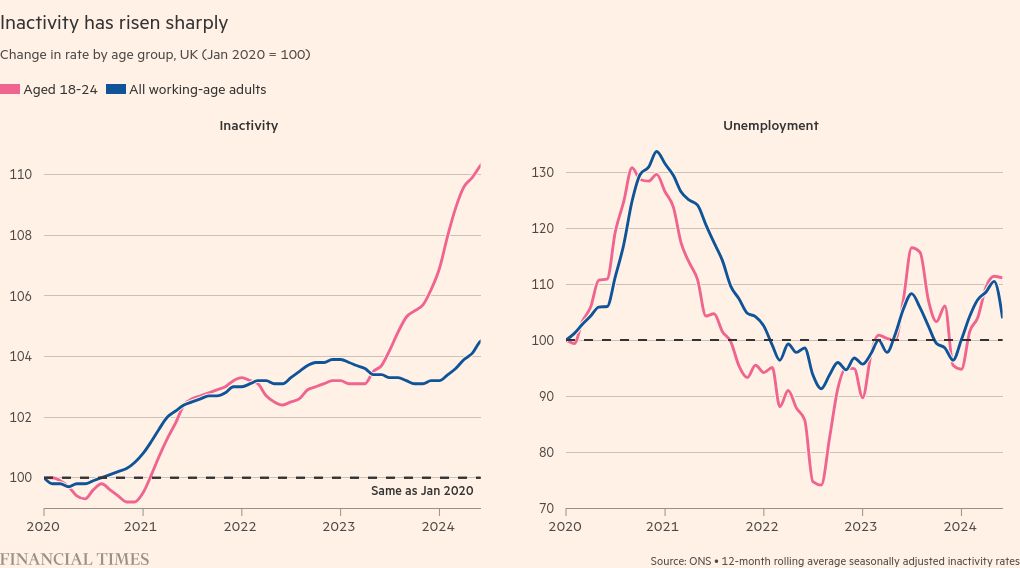
Inactivity rates — defined as the proportion of people who are unable to start work soon or not actively seeking employment — have risen faster for young adults than for the UK workforce as a whole over the past year.
Meanwhile, trends in youth unemployment — young adults who are out of work but actively seeking employment — have tracked the wider economy.
This is out of step with previous periods with low labour market participation, such as the aftermath of the 2008 financial crisis, when a sharp increase in out-of-work young adults was largely driven by a surge in unemployment.
Inactivity rates for people aged 18 to 24 exceeded 35 per cent in the three months ending February 2024, the highest level since records began in 1992.
While students account for a large proportion of inactive young adults, the rapid rise in inactivity reflects the growing prevalence of long-term health problems.
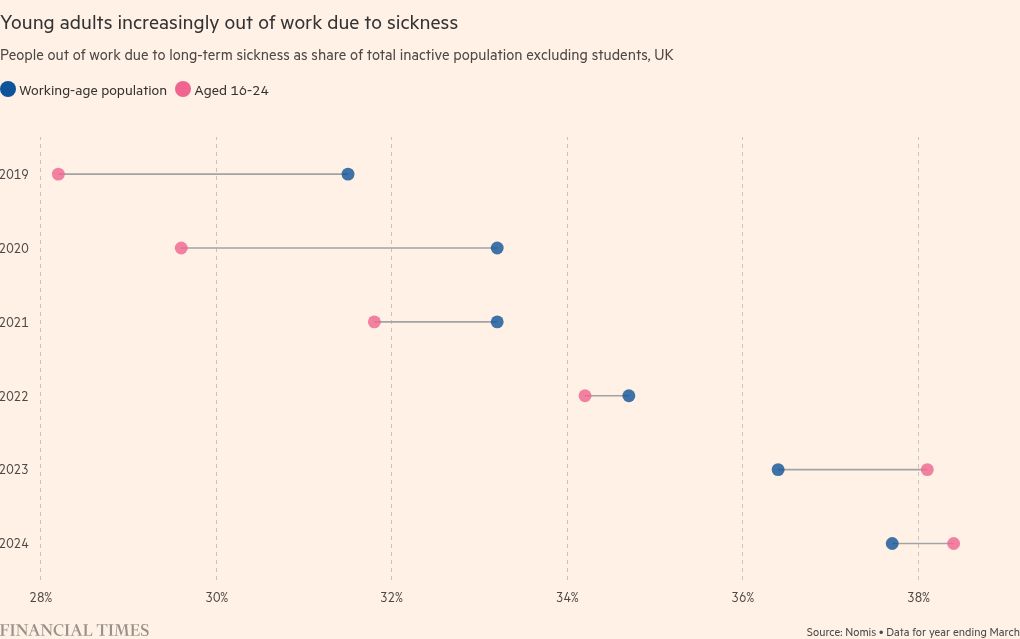
The number of people aged 16 to 24 who are inactive due to long-term sickness reached 240,700 in the first quarter of this year, a rise of 28 per cent compared with the same period in 2022.
This is part of a broader trend, with ill health pushing up inactivity rates across all age groups. But while older inactive workers are more likely to suffer from physical ailments, mental health issues are the leading health issue for younger generations.
One in five 16- to 24-year-olds who were not in education, employment or training last year had a mental health condition, according to official surveys. A further 11 per cent reported having learning difficulties or autism.
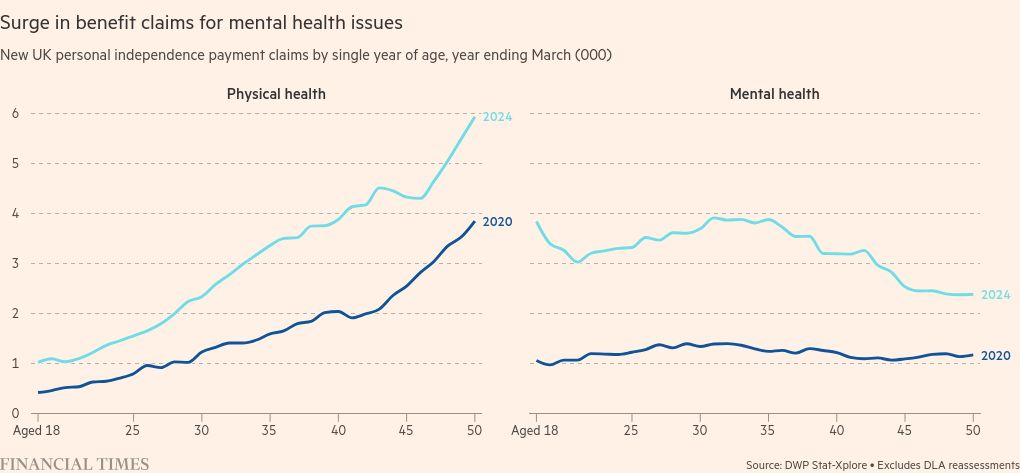
The upwards trend in inactivity has coincided with a surge in young adults receiving health-related disability benefits. The number of new claimants aged 16 to 24 increased 24 per cent in the year to July, largely driven by claims for anxiety, depression and autism.
Sam Ray-Chaudhuri, research economist at the Institute for Fiscal Studies, said it was unclear if the “sharp rise” in young adults claiming benefits was the cause or result of rising inactivity.
“This is a worrying trend with potential negative impacts on economic outcomes that could last many years,” he added.
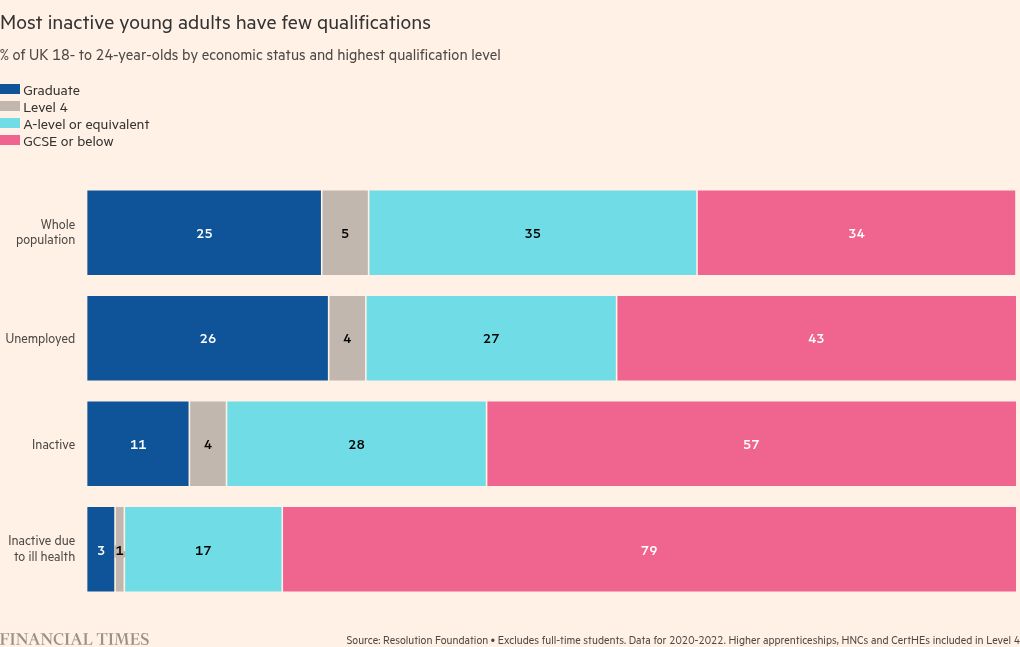
Non-graduates are most at risk of experiencing these damaging long-term effects, as they account for the vast majority of inactive young adults.
Research by the Health Foundation and Resolution Foundation think-tanks found only one in five people aged 18 to 24 who were inactive due to sickness possess qualifications above GCSEs and one in 25 above A-levels.
Christopher Rocks, lead economist at the Health Foundation, said the link between low skills and poor health was clear.
“These young people face the risk of long-term difficulties in securing and staying in jobs,” he said. “Government and employers must act early to prevent health-related job losses, support working-age health, and ultimately futureproof the workforce.”
Measures that would help this in the short term could include improving out-of-work support, and reforming statutory sick pay in the upcoming employment rights bill “to support phased returns to work”, he suggested.
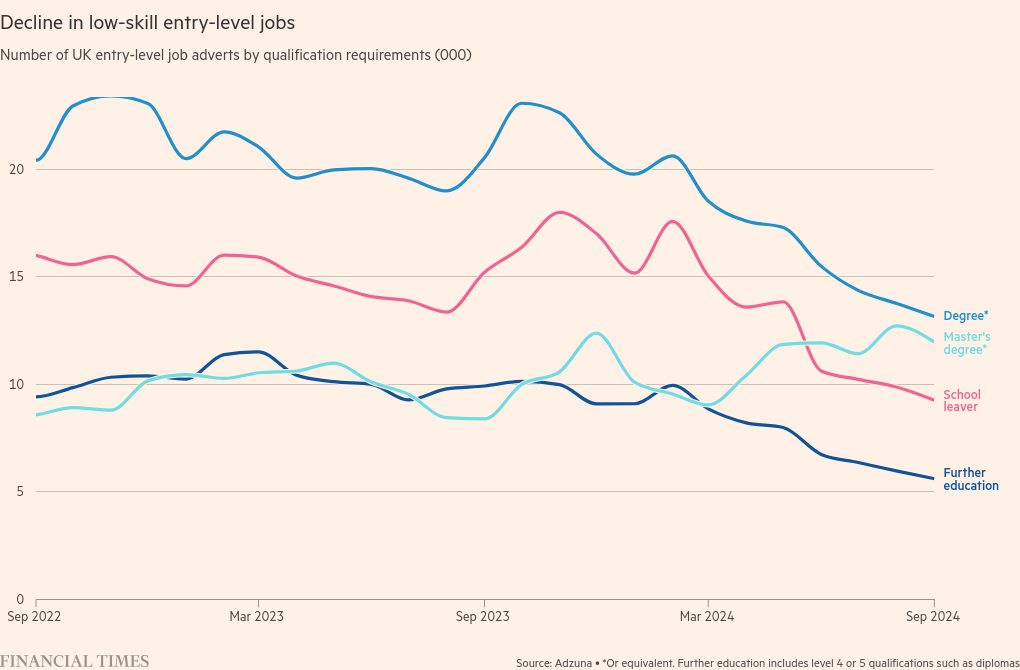
Low-skilled workers have also been hit harder by the slowdown in the jobs market, with the number of openings for school leavers declining 39 per cent over the year to September, compared with 27 per cent across all entry-level jobs.
James Neave, head of data science at job search platform Adzuna, said a competitive jobs market and rising skill requirements for entry-level jobs had contributed to high rates of inactivity and unemployment.
“The increase in minimum qualifications will be ruling out an increasing proportion of under-25 jobseekers,” he added.
“The rapid pace of technological innovation is driving the need for workers with advanced skills in areas such as artificial intelligence, data science, cyber security and digital marketing.”
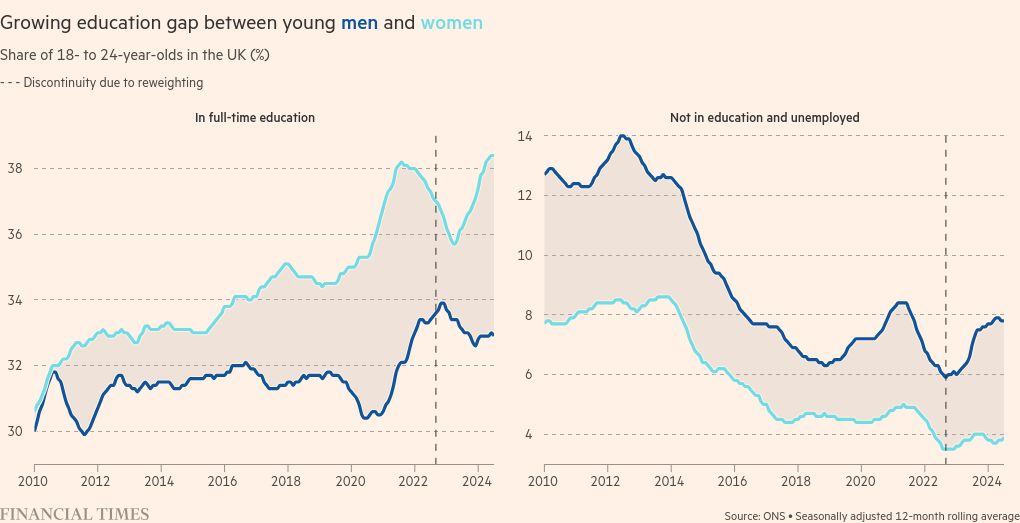
In recent months there have been more entry-level roles requiring master’s degrees than there were advertisements for school leavers, according to Adzuna.
The growing demand for high-level qualifications is likely to benefit young women, who have seen full-time education rates return to post-pandemic highs in recent months.
This has widened the gap with their male peers, who remain far less likely to be in full-time education and almost twice as likely to be unemployed.